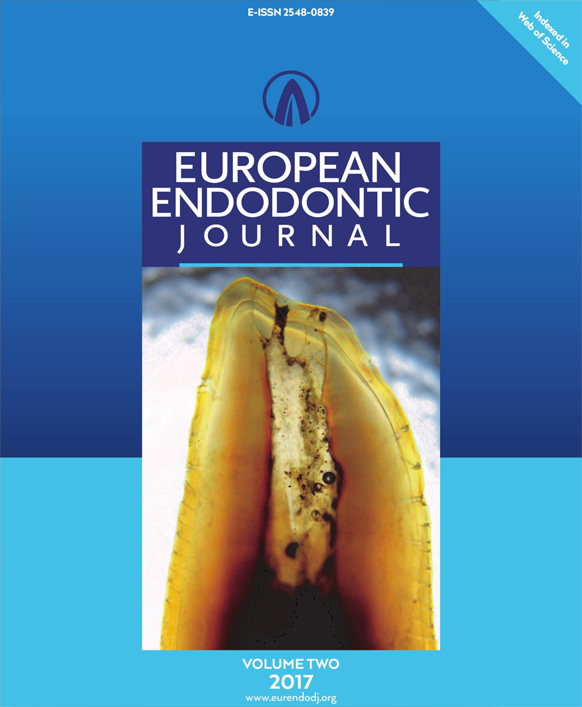
European Endodontic Journal
Yazarlar: Karina Rogues Salgado, Roberta Fonseca De Castro, Marina Carvalho Prado, Gustavo Antônio Brandão, Juliana Melo Da Silva, Emmanuel João Nogueira Leal Da Silv
Konular:-
DOI:10.14744/eej.2018.14632
Anahtar Kelimeler: Endodontics,Irrigation,Retreatment,Root canals irrigants,Root canal treatment,Scanning electron microscopy
Özet: This study investigated the influence of different irrigants and the use of orange oil solvent in the removal of filling materials during root canal retreatment. Methods: Forty maxillary premolars were shaped using the ProTaper System up to file F3 (size 30, 0.09 taper) and filled by Tagger’s hybrid technique using the AH Plus. Samples were randomly assigned to four groups (n=10) according to the irrigating protocol during endodontic retreatment with the ProTaper Universal Retreatment System: G1, 2% chlorhexidine (CHX) gel; G2, 2% CHX gel with an orange oil solvent; G3, 5% sodium hypochlorite (NaOCl); and G4, 5% NaOCl with an orange oil solvent. Afterwards, the samples were longitudinally split into two halves, and the root wall images were prepared by scanning electron microscopy. Two pre-calibrated evaluators analyzed the images using a filling materials remnants score system. Data were statistically analyzed using the Kruskal–Wallis and Dunn’s tests (p<0.05). Results: All samples had residual filling materials in the root canal walls after instrumentation. According to the presence of the filling material remnants in the total area of samples, the groups were ranked in the following order: G2=G4>G1=G3. No statistical differences were found when the CHX and NaOCl were used (p>0.05). Groups in which a solvent was used showed a less effective cleaning ability (p<0.05). The use of NaOCl with solvent presented the highest amounts of filling materials remnants in the critical apical area (p<0.05). Conclusion: The use of orange oil with NaOCl or CHX does not improve the removal of residual root canal filling materials.